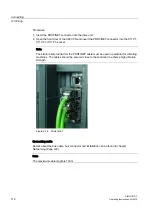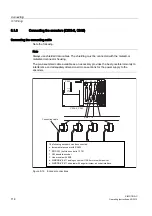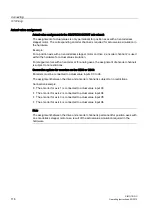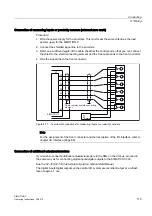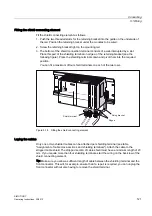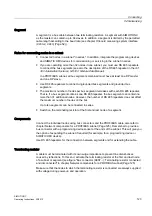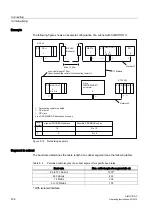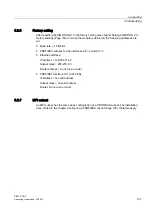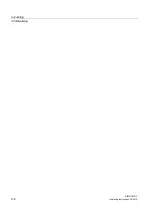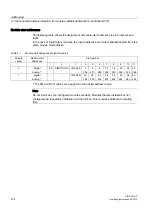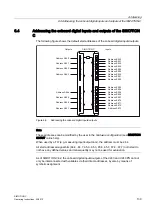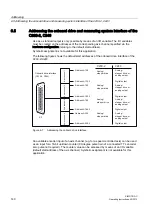
Connecting
5.2 Networking
SIMOTION C
126
Operating Instructions, 02/2012
Rules for laying
PROFIBUS cables must not be twisted, stretched, or compressed.
When installing the indoor bus cable, you should also remember the following boundary
conditions (d
A
= outer diameter of the cable):
Table 5- 11 Boundary conditions for indoor routing of bus cable
Features
Limitations/constraints
Bending radius for a single bend
≥ 80 mm (10 x d
A
)
Bend radius for multiple bends
≥ 160 mm (20 x d
A
)
Permissible temperature range for installation
- 40° C to + 60° C
Shelf and static operating temperature range
- 40° C to + 60° C
Bus connector
The bus connector is used to connect the PROFIBUS cable to the PROFIBUS DP interfaces
(X8, X9), thus establishing a connection to additional nodes.
The following bus connectors are available:
● Up to 12 Mbits/s, cable outlet 90°
– Without PG socket (6ES7 972-0BA12-0XA0 or 6ES7 972-0BA50-0XA0)
– With PG socket (6ES7 972-0BB12-0XA0 or 6ES7 972-0BB50-0XA0)
● Up to 12 Mbits/s, canted cable turn
– Without PG socket (6ES7 972-0BA41-0XA0)
– With PG socket (6ES7 972-0BB41-0XA0)
Inserting a bus connector in a module
Proceed as follows to connect the bus connector:
1.
Plug the bus connector into the module.
2.
Screw the bus connector tightly onto the module.
3.
If the bus connector is located at the start or the end of a segment, you must connect the
terminating resistor ("ON" switch setting) (refer to the following figure).
Make sure that the nodes at which the terminating resistor is located are always supplied
with voltage during startup and operation.
7HUPLQDWLQJUHVLVWRU
VZLWFKHGLQ
7HUPLQDWLQJUHVLVWRU
QRWVZLWFKHGLQ
RQ
RII
RQ
RII
Figure 5-20 Bus connector (6ES7 ...): terminating resistor switched on and off

